#rr gems
For me, one of the most exciting discoveries of 2020 was RR GEMS, an imprint based in Estonia releasing high quality vinyl pressings of free jazz, psychedelia, and much else besides (who happened to put out one of my favorite LPs of recent memory in Soft Power’s Brink of Extinction). But the discovery was even richer than I imagined, for RR GEMS is also closely related to another label—the esoterically inclined Hidden Harmony Recordings. Debuting last year with C.R. Gillespie’s Concentration Patterns, Hidden Harmony then went on to release Conservatory of Flowers by Maria Teriaeva, and 8 by Morita Vargas—each one of these records a completely singular sonic experience exploring captivating textures closer to the fourth world, with meditative ambient, deviant pop, leftfield dance, new age minimalism, and electro-acoustic experimentation all intermingling. As well, the label has established a unique and visually striking aesthetic, presenting their deluxe pressings in framed outer sleeves, which then encase combinations of hallucinogenic nature photography, portraiture, and graphic design. Of the Hidden Harmony’s releases so far, I was particularly taken aback by the respective works of Teriaeva and Vargas, and I plan to write about each of their albums in the coming weeks, starting with Vargas’ 8.
Morita Vargas is an experimental artist from Buenos Aires, and she has been sowing and growing the seeds of 8 since 2014, when she used a phone to document various vocal snippets while wandering the cityscape. Over the years, these early sketches were enhanced by woodwinds, world percussions, mallet instruments, and a polychromatic palette of keys and synths, with the vocals themselves being treated to myriad manipulations both organic and electronic…mutating, modulating, and pitch-shifting into a psychedelic display of fairy spells, pixie incantations, diva flights, secretive whispers, breathy chants, and hypnotizing turns of phrase. It’s all rendered through mysterious languages of the artists’ own creation, and the performances serve to illuminate themes relating to death, transformation, and rebirth—which further tie into the numerological significance of the title, as the number 8 symbolizes “the transition between heaven and earth, and the illumination of our capacity for various metamorphoses.” The end result is an album of melancholic resonance and joyous warmth; of new age naturalism and tropical fever dreaming; of childlike flights through fantasy forests and forbidden visions of ancient rituals; and of sensual body motions and dances lost to hedonistic ecstasy.
Morita Vargas - 8 (Hidden Harmony Recordings, 2020)
At the start of “Bernisa,” synthesized arpeggios sparkle like gemstones while birds sing in the distance, resulting in a new age lullaby imbued with a certain esoteric spirt. Melodies flow through key changes that portend hope and sorrow at once, with further keyboard layers chiming in counterpoint. As everything reduces, whispering chords pan softly, understated leads constructed from glowing glass drop onto the mix, and after an expanse of mid-bass meditation, the birdcalls return, bringing with them kosmische arps and a cascade of jazzy keyboard solos…with the minimalist structures and mysterious melodies evoking both Steve Reich and Beverly Glenn-Copeland. Massive sub bass motions rattle the soul in “Paitice,” while shakers and woodblocks dance through clouds of reverb. Vargas’ vocals are shrouded in dark layers of smoke as they move through druidic incantations, and the vibe is akin to some shamanic ceremonial. Gothic choirs are lost in the jungle…their minds entranced by strange perfumes from tropical flowers, causing their deep and soulful arias to move towards psycho-activation. The mysterious incantations are tempered by ecstatic whispers and hyperventilating chants that raise the hair on the back of the neck, with the vocals becoming their own sort of percussion that both works for and against the subsonic tribal basslines, and the snapping shakers and tones of tapped wood. The chorale cascades seem to vaporize as the track progresses, becoming ever more distant—as if heard through a thick pearlescent fog—and towards the end, pitch-shifting pixie voices generate a hypnotizing strain of a cappella psychedelia, with looping phrases overtaken by hiss and sibilance, until the whole thing resembles some abstract minimalist sound sculpture.
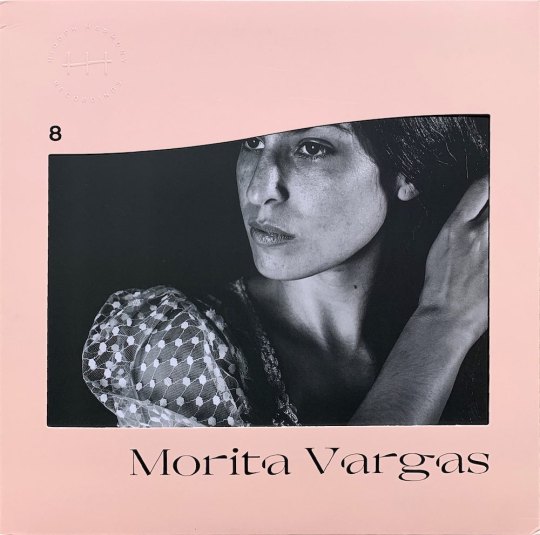
“XOXOXOXO” begins with mechanized tribal rhythms like robots scoring a shadowy rainforest ritual. Telephonic synths and blasted space electronics pan as ethereal vocals diffuse into the stereo field…these epic waves of oceanic wonderment overlaid by sensual coos and breaths. Further layers of rhythm enter the scene, creative captivating polyrhythms that only enhance the vibe of low slung dancefloor swagger. During a momentary respite, the beats fade, leaving space for desperate vocalizations and spare piano notes to float in the abyss, with long howling decay trails smothered in reverberation. The technoid tribal drums eventually return, as do the ethereal wavefronts of vocal warmth, and everything grows progressively wilder…almost like some feral scream towards the sky. Next comes “Deysa” and its synthesized bubble forms pulsating against counterpoint percolations. Its another expanse of Reich-ian minimalist sorcery that soon gives way to a playfully bouncing sequential ascent…as if the mind is racing up and down some corridor constructed of rainbow light. Amorphous angel voices sing with abandon and at times erupt towards the animalistic, while whispered refrains and sparse idiophone melodies dazzle the mind. The track snaps back toward magical minimalism briefly, before breaking again towards childlike kosmische, with voices growing increasingly adventurous and almost completely abandoning the racing synthesizer sequences, floating instead into a parallel dimension. Suddenly, a fairy chants fantastical spells of mysterious origin, and is soon supported by a stuttering hypno-beat, one where hand drums pound maniacally and only just hold to a tempo. All the while, the vocals smear into a spectral shriek as the heart races towards ecstasy, and eventually, a burst of bass washes the mix clean. The A-side closes with “Aguila” and its foamy pads stretching out like layers of cotton candy. Space age brass synths sing triumphant songs while mallet instruments sparkle overheard, their melodies and tones eventually reversing in time, creating mirage shimmers and showers of golden glitter. Vargas then abruptly transitions the track into a sequential dream sequence, with softened synth melodies cycling at hyperspeed…almost like a lullaby induction into a world of sleep-induced fantasy.
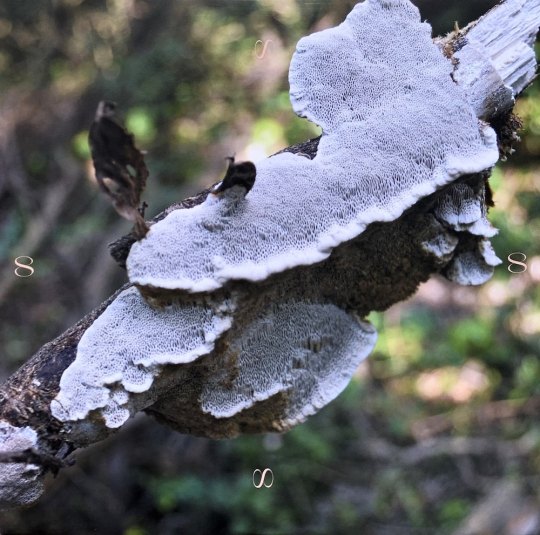
Opening the B-side is “Gargantsa,” which features angular basslines evoking a pitched down clavinet. Further funky keyboard layers dance aside the mutant bass movements and a four-four kick drum drops, transforming the track into a slab of minimal club euphoria. Vargas chants over it all like some diva of destiny, with sensual coos and whispered secrets threading together, and occasionally shifting down into syrupy sexuality. During certain stretches, the mix reduces to just voice and kick drum, and each and every looped phrased serves to entice the body and spirit deeper into dancefloor delirium. The groove continually shifts and evolves as insectoid fx and feedback tracers track the hypnotizing house beats, and as we move deeper into Vargas’ spell, the vibe is like being transported to some hidden nightclub in the middle of a sweltering rain forest, with roof open to the moon and shadow-shrouded bodies gyrating in ecstasy. “Devonte” comes next, wherein new age piano inactions evoke the movements of celestial oceans. Whispered poetry enters alongside a pounding rhythm, bell trees sparkle like stars on the surface of the sea, and Vargas’ voice grows increasingly strange and desperate as the song spaces further and further out. Droning soul chords underly pitch-shifting babbles while post-punk basslines chug alongside kick drums beneath a blanket of dub reverb. And then suddenly, we return to the mysterious piano ambiance, and to visages of waves washing beneath a canopy of starshine.

Woven webs of acoustic guitar splay out through echo machines in “Oly,” and demonic voices bubble up through mist, with tones rattling all around the periphery. Kalimbas glow and tambourines shake freely before locking into a mesmeric rhythm, which works against pulsating delay patterns. Voices both mysterious and sinister wash across the mix like granular clouds of noise, yet any harshness is tempered by the acoustic guitars, which are as soothing as they are abstract. Whistles emerge to wash away the mix, sparse folk melodies intermingle with field recordings in the distance, and by the end, Vargas’ voice devolves into infantile chatter. In “I feel lost,” dreamscape ivory arpeggios swim up and down the scale as ethereal melodies sing in support…the whole thing not unlike some early Mogwai interlude (think “Radar Maker” from Young Team). A synthesized string sections transforms the vibe towards post-classical fantasia, with harmonious chord strokes working together with fluttering minimalist melodies. At some point the layers of immersive ambiance recede, leaving again the mutating piano conversations, and when Vargas brings in the sighing strings, there are shades of Godspeed You! Black Emeperor—even as subtle jazz leads cluster together. “Ginseng” ends the experience, and sees an electric piano singing alien songs while idiophones play sparsely in support. Electronics like blinding whistle tones filter into the spectrum as the keys mutate towards smoldering drone clouds and through it all, chime trees shine and sparkle. The pianos mostly fade into obscurity, supplying only understated textures of ecclesiastical enchantment as we walk further and further into some tropical jungle, with radiant currents of light bathing the body and reverb kissing every singly sound. Some strange forest drum ceremonial proceeds far away as the trip grows increasingly psychedelic, with Vargas’ musings evoking mystical nature spirits as they enchant the soul deeper and deeper into a lost paradise.
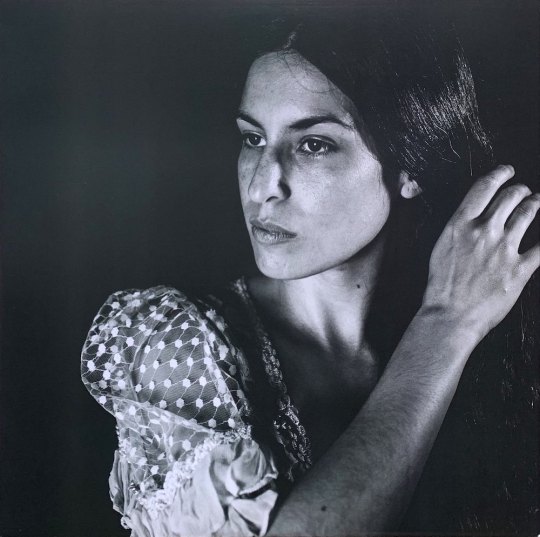
(images from my personal copy)
Having reviewed Morita Vargas’ 8 a few weeks ago, I’ll now turn my attention towards another standout release from Hidden Harmony Recordings, which is Maria Teriaeva’s Conservatory of Flowers. As her main tool, Teriaeva employs a Buchla 200e modular system, and throughout Conservatory of Flowers, she wrestles and wrangles some incredible tones from this singular synthesizer palette. Though the LP additionally features field recordings, bass flute, cello, trumpet, sax, guitar, and voice, you’d be forgiven for thinking there were mallet instruments and thumb pianos, timpanis and tubas, seed shakers and hand drums, and much else besides, for Teriaeva configures her sorcerous electronics into a polychromatic display of instrumental emulation. Which is not to say that the Buchla isn’t also used for purposes of angelic ambient, sci-fi strangeness, or dissonant drone, and indeed, the compositions here are as experimental as they are immediate, as Teriaeva and her collaborators weave together threads of avant-garde sound design into concise song structures that are at once madcap and dexterous, and that turn often and unexpectedly into far out sonic realms…with passages of futurist forest folk or deviant pop ecstasy plunging suddenly into shadowy abysses of strings and bass synthesis, only to then rush back towards the light. Taking in the full experience, my mind drifts to Kate NV, to Ryuichi Sakamoto, and to Yasuaki Shimizu, though there is a level of gleeful experimentation on display that also evokes the works of Museum of Modern Art, Georgia, and Michelle Mercure. But these are only vague signposts, and in truth, the sonic world of Conservatory of Flowers is utterly unique…a rhythmic and percussive paradise of organic instrumentations and exotic synthesizer colorations that only gets more compelling—and more strange—with each listen. And though the original tracks are great enough, the album also includes a gonzo remix of “Spritz” from Sapphire Slows, which stitches together chopped vocals, stuttering house beats, funk basslines, and mutating rave chords into an anxious expanse of alien club euphoria.
Maria Teriaeva - Conservatory of Flowers (Hidden Harmony Recordings, 2020)
“The Jungle in June” opens the album with panning clicks evoking crystalline insect wings, flowing layers of underwater ambiance, and gemstones melting in place as they merge with shimmering clouds of ether. Kalimba and marimba tones sourced from Teriaeva’s Buchla join together with sub bass percolations that inhabit a zone between kick drum and bassline, and subtle pitch shifts send lysergic wavefronts through the air. As the deep sea ambiance recedes, it is replaced by gusts of granular wind, and all around, modular idiophones and hyperspeed panning effects dance together, with the mix minimal, spacious, and leaving plenty of room for a ceremonial beat to work the body. And at the end, pallid pads glow in oceanic hues while hovering in place, holding to no particular key until the whole mix disappears in a flash. Broken transmissions and twinkling metals introduce “Paris Texas,” with everything moving back and forth across the stereo field at varying speeds. Melodies attempt to form and subtle progressions are hinted at within the sparkling drone clouds; reverberating fx trail off through guttural breaths and demented echoes; and somewhere in the murk sits the bass flute of Sasha Elina, though it merges in totality with Teriaeva’s modular sound maze. What then develops is a world of polyrhythmic magic, with a multitude of sequences and woodwinds pinging left to right while accelerating in tempo. The sonic spectrum overflows with lightspeed pulsations and flourishes of minimalist magic, with machines hissing like snake tails and crazed idiophone patterns careening at random…like a drunken cloud of cicadas moving according to no particular logic. And at some point the mix seems to reduce slightly in intensity, which gives space to alien frog croaks and mysterious hints of voice.
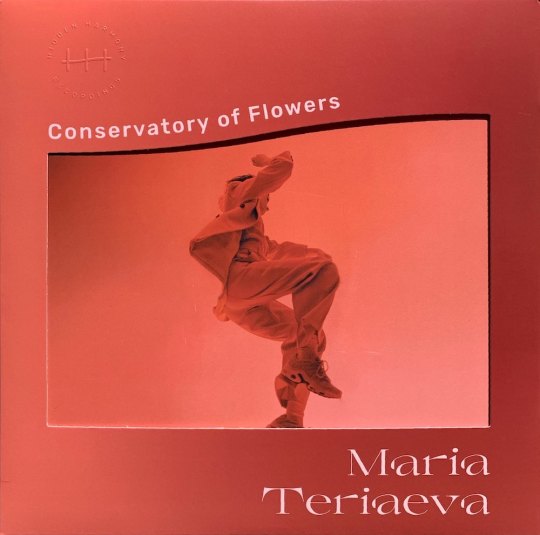
Rainbow-hued squelches dance at the start of “SØS” and dissonant blasts of metalloid haze slowly resolve into a tuba-esque progression. Starshine sequences and electronics like malfunctioning bird calls enter the stereo field as the piece settles into a drunken waltz, one led by a two-note bassline that lands with Lynchian energy…think 50s pop slowed to a dopamine crawl. As the bass groove disperses, space is left for synthetic percussions to pop and sickly leads to buzz amidst wisps of galactic light, and after the track changes vibe once more, dramatic and Buchla-generated idiophone descents join ceremonial drums while outer-dimensional liquids wash all around. Shifting again, we return to seasick sequencing and that Twin Peaks-indebted bassline, which sets up a magical merging of the various pieces of the song…a madcap layering of waltzing 50s sci-fi mesmerism built from squelching synths and squarewave bass throbs, rainforest percussions and modular mallet melodies, and melting streaks of starshine…the result an abstract dance of alien balearica, which is not unlike the weirder works of artists such as Pharaohs, Stratus, and Shelter. Next comes “Spritz,” which starts with cello strings bowing in hypnotic ecstasy before the mix explodes, seeing Vasiliy Yanik’s saxophone and Nikita Shishkov’s trumpet snaking in celebration through the manic choir vocalizations of Vadik Korolev…the whole thing pulling my mind to the work of Yasuaki Shimizu. A sharp transition cuts the track down to splattered and heavily effected string clatter, pounding bass, and reverberating snap patterns as hints of the euphoric sound orgy preceding start building back in strength. Horns converse and bowed cellos generate sunrise colorations before devolving into a shimmering display of spectral metal, and eventually, the manic Shimizu-style avant pop dance returns in full strength. But just as quickly, the track breaks down again…back to the world of broken electro-string skitter, ritualized percussion, and expressive sax, trumpet, and string accents. The vocals build around with wondrous “AY-YA-YA” chants until the spectrum is overwhelmed by sheets of percussive detritus, and after devolving further towards masculine breathing and wheezing whooshes of neon static, Yana Chekina’s cello detunes wildly while scraping and crawling towards the sky.

In “How Are You Feeling?” percussive sequences tick through cut up samples sourced from the Russian Bird Conservation Union, with the whole thing sounding like a transmission from some broken satellite. Synthetic water drums pan across the spectrum while holding a hypnotizing body flow and strange melodies are carried by blinding currents of feedback and searing sonar blips. At once the vibe changes, seeing detuning waves of orchestral synthesis billow out from the center of the universe in a way that recalls the terrifying kosmische expanses of Klaus Schulze’s Irrlicht,or perhaps Tangerine Dream’s Zeit. Then, following this expanse of viscous darkness, we suddenly return to a jungle of peace and light, wherein birds resume singing amidst insect chatter while idiophones play lullabies to the rising sun. Sub bass currents move with propulsive energy and crazed comets streaks across the sky as the body swings back and forth in a state of mirth, though touches of melancholy softly kiss the melodic progressions. “A Sunlit Room” closes the first side with bowed strings and clattering clouds of madness that soon give way to an Afro-folk synth bounce, which is accented by fizzing bodies of liquid effervescence. Strange echo trails skitter down reverberating hallways and morphing blasts of air land throughout the spectrum as the main synth progression filters wildly and eventually, the songs seems to fall apart while simultaneously increasing in intensity, as Yana Chekina’s bowed cello strings underly layers of bouncing melodic mesmerism…a child-like hook that works itself deep into the brain and again evokes Yasuaki Shimizu, though Teriaeva’s concoction is altogether stranger than anything he might compose. Higher pitched electronics move with hesitation, percussive layers like the motions of nervous insects wash across the mix, and those Afro-kosmische synths again filter out of control while bouncing bleeps and bloops drop like globules of starlight. Then following a pause, there’s an explosion of bowed strings and bass electronics, which together execute an alien dream dance within a world of panning rhythmic skitter and anxious radar accents…all as white noise winds blow and liquids vaporize into polychrome ether.
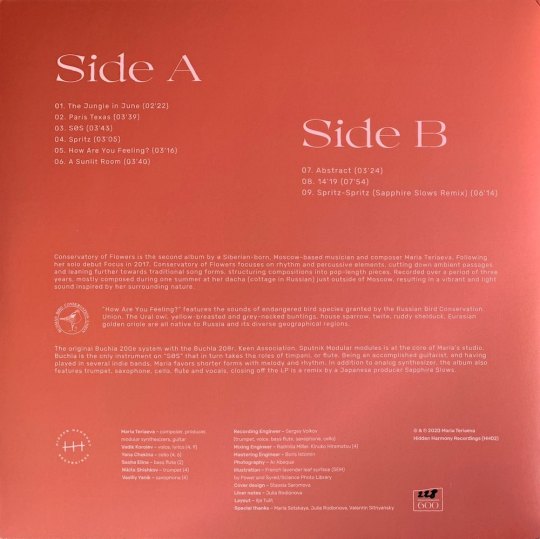
The B-side opens with “Abstract” and its cavernous spaces suffused through by twinkling crystals and glimmering alloys. Percussive accents shift in pitch…their effect like liquids dripping into neon pools…and a shadowy hand drum rhythm builds up as the sparkling sound cascades lessen in magnitude, while also locking into the rhythmic flow. What emerges is something not unlike Vague Imaginaires’ “L'essor du roraima,” especially as we settle deeper into a slow and low tribal drum ritual overlaid by clouds of futurist magic, wherein polyrhythmic metals are structured into a brain-bending flow. Dissonant sirens emerge from the distance, wavering cascades of mutating light melt upon the mix, and a pounding bass drum holds down the beat through layers of feverish delirium before the track breaks apart, leaving sickly wavefronts of droning skree and currents of nacreous noise to merge into a malarial fog. Next comes “14’19” and its clockwork sequences, which morph through maddening fx that spread and pan the sounds into psychedelic zooms and spectral whooshes. The sequential patterns take on a rougher and noisier tone as pitch-bending sirens enter the stereo field, and eventually, everything settles into a harmonious wall of droning chords that periodically detunes…the effect creating waves of warbling wow’n’flutter that spread out towards infinity. Delay feedback manipulations generate industrial screams and dizzying whirlpools that surround the spirit, and as the piercing sirens tones pulse continuously in one ear, their decay trails are caught and reversed in the other. Billowing blankets of distorted synthesis bend towards dissonance before dispersing and eventually, the song changes in vibe, seeing mutating sequences bounce joyously back and further under heavy filtering and modulation…the motions and tones causing the mind and body to lose all sense of space-time. Pads awash in orchestral majesty hover in place before plunging down in pitch, and flubby brass arps emerge then cut away as we return to the introductory world of ticking sequences and searing siren screams.
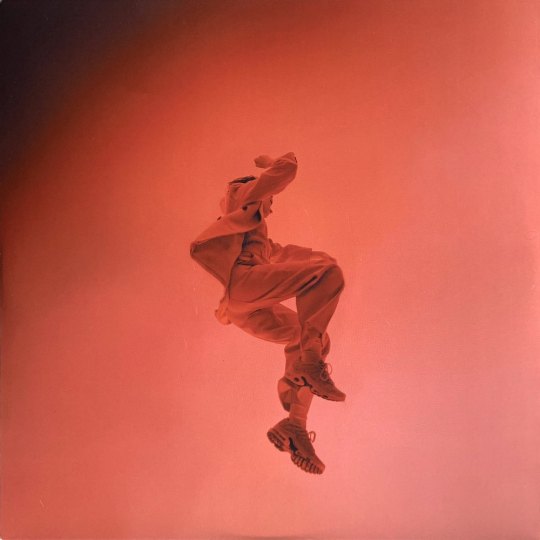
A long stretch of silence leads to a secret track, which features FM bells decaying in the wrong direction alongside subtle clusters of industrial breath. Methodic bass patterns and the patient beat of a subaquatic drum are at odds with the anxious bodies of chaos swirling up above,..these howls of metallic noise and drone that merge into a discontinuous storm cloud, wherein evocations of things heard before now modulate, distort, and flow backwards in time. As well, the end of the B-side also contains a special remix of “Spritz” by Sapphire Slows. Entitled “Spritz-Spritz,” the track begins with detuning sirens blasts and swelling vortices of vibration, while snaps hold down a sparse rhythm. Cyborg string plucks spread out into fractal structures, bulbous basslines move underneath the flow, and a kick drum adds a body-bobbing club energy as spacey sequences descend then disperse. Double-time cymbals flow in from silence and ricocheting dub flourishes wash side to side…the vibe low slung and delirious, especially as snares drop at the end of each measure. Rhythms pull away as psychotic rave chords pitch-shift and pulse overhead, and the vocals of Vadik Korolev are cut up and repurposed amidst popping percussive sequences. The kick drum returns—though now the beat stutters anxiously through abstracted fogs of snare—and eventually, a start/stop hypno-rhythm takes over, led by slinky funk basslines, ticking shaker tones, and conglomerations of oscillation that seem to bubble up from sub-earthen depths. Blistered leads burn across the mix as the vocals pull away, leaving behind a strange world of animalistic synthesis. And when the cut-up choral accents return, they pulse in tandem with the militant flow of detuning rave chords…the result another expanse of club delirium, though as before, the vibe is angular, off-kilter, and increasingly extra-terrestrial.
(images from my personal copy)
